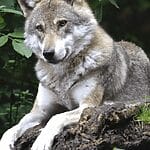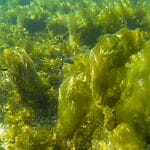The ‘waitoreke’ is one of the most remarkable and best loved creatures in New Zealand folklore, known for its cute appearance and elusive, mysterious origins.

However, despite numerous supposed sightings, experts are still unsure of the origins of these tales, and what the spotted creatures might indeed have been.
But what exactly is the ‘waitoreke’, and what do the experts say?
What Is A ‘Waitoreke’?
The waitoreke is said to be a small, furry creature found throughout New Zealand folklore.
Commonly referred to as the ‘south island otter’, it is considered to be an otter/beaver-like creature, similar in appearance to the eastern quoll – with mousey brown fur, and distinctive white spots along the back and the hindquarters.
While the actual origin of the name ‘waitoreke’ is not known for definite, it was used by the Reverend Richard Taylor in the 1840s, where he described a ‘waitoreke otter’.
However, the source of the name is still unknown, and is not considered to be grammatically correct in the Maori language, eliminating that as a potential origin point.
What Do ‘Waitorekes’ Look Like?
As mentioned previously, the coat of the waitoreke was described as looking similar to the eastern quoll – that is, mousey brown in color, with distinctive white spotting across the back.
They are described as small in size and stature, with an otter-like appearance that is roughly the size as a cat.
The creatures are supposedly regularly sighted in watery regions, which is one reason why they are continuously associated with otters (Also check out Different Types Of Otters) and beavers.
Despite these beliefs, little evidence actually exists as to what the waitoreke actually looked like, or whether it ever even existed within the animal kingdom.
In 1838, an alleged pelt was found and handed in by explorer Julius Von Haast, however while being consistent with the descriptions, it lacked toe webbing, which would be necessary for water based creatures like otters and beavers.
Many experts consider the pelt to be inconclusive evidence, and more likely belonging to creatures like quolls – which it represents fairly clearly – as well as other animals like the common brushtail possum (see also: 5 Amazing Facts About Brushtail Possums)and the common ringtail possum, both of which were introduced to New Zealand in the mid to late 1800s.
Is ‘Waitoreke’ A Marsupial?
Amongst those who argue the creature’s legitimacy, there has been much debate about which species the creature actually belongs to – especially with the large concentration of marsupials in Australia, New Zealand, and other territories like Tasmania and New Guinea.
However, due to the water based nature of its alleged existence, many theorists do not consider it to be a marsupial – mainly due to the fact that it spends a lot of time in water, and pouched offspring would likely drown.
For this reason, it is classified as an ‘aquatic mammal’ by those in the field, although it is worth noting that this term is fairly vague.
Could It Be A Monotreme?
The other theory is that it is some kind of monotreme – just like the duck-billed platypus, and other aquatic mammals.
Monotremes, like the above mentioned platypus, give birth to eggs similar to birds do, with the young hatching in a nest after a period of gestation.
Within the context of the waitoreke, this would certainly make more sense from an evolutionary perspective, as water based mammals cannot give birth to live young and keep them in a pouch.
This is because they cannot actually breathe underwater, despite the large amount of time they spend beneath the surface.
Monotreme Vs Marsupial: The Difference
There are of course many differences between a marsupial and a monotreme, but the most notable one regards their young, and the manner in which they give birth.

Marsupials, like kangaroos and wallabies, release an embryo into their pouch, where it will then mature gradually over a period of roughly 9-10 months, leaving the pouch once old enough.
Monotremes, like platypuses, lay eggs on land, where they watch over them in a nest until they reach maturity. Once they have reached maturity, they can then break free of their eggs, and live their lives with their mother.
What Possible Mammals Could It Be?
Of course, with the dispute over the creature’s legitimacy, the question regarding its true origins became more pronounced. The main question was thus: if the creature is not in fact real, then what could have been the source of the sightings?
There are many confirmed endemic land mammals within New Zealand, but these are all species of bats.
This leads skeptics to believe that the creature was one of the species of mammal brought over by settlers – such as the otter, beaver, or pinniped.
How Is It Classified By Experts?
Wildlife experts have officially classified the waitoreke as a cryptid – that is, a creature of folklore.
Other notable cryptids around the world include North American ‘Bigfoot’, the Scottish ‘Loch Ness monster’, the Australian ‘bunyip’, and the ‘mothman’ of Point Pleasant, West Virginia.
This has caused backlash and anger by those who claim to have seen the creature, but without sufficient evidence to the contrary, it seems like the waitoreke is confined to this corner of the paranormal world – acting as a source of excitement, adventure, and mystery for those determined to prove the authenticity of the creature in the wild.
What Evidence Would Be Required?
Of course, this begs the question: what evidence would be sufficient to prove their existence?
Photographic Evidence
Obviously, one of the main sources of evidence would be photographic or video evidence, wherein the creature can be seen clearly enough to be distinguished from the quoll or indeed some form of otter or beaver.
A Body
The primary piece of evidence would be a body – be it alive or dead. This would allow experts to properly examine the creature, and ascertain whether it is in fact a variation of the quoll or other native species, or indeed if it is something different entirely.
This could be done through a physical examination, or an autopsy, and would prove once and for all whether the creature exists.
A Habitat
Likewise, if a habitat of waitoreke was found, then this would be proof to continue the investigation.
However, such evidence has never been found – or at least not enough to officially separate the creature from an otter, beaver, or other water based aquatic mammal.
Droppings/DNA
Another source of evidence would be through the scientific examination of droppings, fur, or some other source of DNA evidence.
Even if a body was not found, this would be sufficient enough to open an investigation to find further definitive evidence about the creature’s nature.
Final Thoughts
And there we have it, everything you need to know about the New Zealand ‘waitoreke’, and which species it allegedly belongs to!
It’s true that the waitoreke is a remarkable and much loved creature within New Zealand folklore, becoming something of a natural treasure within the country’s culture.
So if you want to know more about the waitoreke, why not research further? Something tells me you won’t be disappointed!









